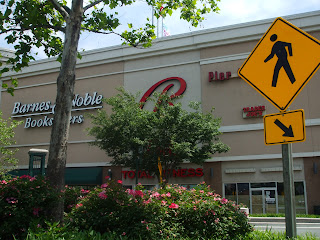So there has been some steam brewing about a proposal to connect Lutherville to Downtown via a new transit line be it Light Rail Subway or Bus Rapid transit. There are new alternate routes in which to choose from just as there are multiple different transportation forms. Since this project is in its infancy and I have been mulling over this north-south line for decades, please allow me to offer my two cents but first let me call it what it is; The Yellow Line.
The Yellow Line, according to the Baltimore Regional Rail Plan published in 2002, is primarily a north-south line roughly running parallel to the existing Light Rail Line renamed the Blue Line in the same Baltimore Regional Rail Plan. Although there had been steam to build the east west Red Line during the Ehrlich/O'Malley Years, it unilaterally killed by Larry. Newly elected Governor Wes Moore along with Maryland's US Senators and Representatives have thrown their support behind reviving the Red Line.
Despite the Red Line, MAGLEV, and adding spurs to the existing Light Rail (blue line) like Port Covington, the Yellow Line has remained unmentioned since 2002. However, this proposal to connect Lutherville to Downtown has been the first such mention of a line resembling the original Yellow Line in 20 years.
The southern end to the proposed Line has several different locations including Port Covington and Inner Harbor East which are both upscale new Neighborhoods which are draining the life's blood out of Downtown. This is why I would have Charles Center be the southern end for now. It would also be a transfer point to the current subway line (Green Line) whose Charles Center stop is a double decker meant for eventual expansion.
Although there are many alternate routes northbound for this new Yellow Line, it's set to ultimately end at Hunt Valley where the current Light Rail (blue line) does. The most direst route I assume would be for the line to run northbound up Calvert Street with stops at Mercy Hospital, Mount Vernon, and Penn Station before heading up Greenmount Avenue where it would serve Barclay, Waverly, Govans, Rogers Forge, GBMC, Towson University, Shepherd Pratt, and finally Towson Town Center all along York Road.
Towson Town Center is where I personally would have ended the line but this proposal has the line continuing up York Road and reaching Hunt Valley this way. I personally don't think that two lines need to go all the way up to Hunt Valley so I will have the Yellow Line end at Lutherville Station which currently a struggling big box center although there are plans to redevelop this into a high density 400 apartment mixed use TOD neighborhood.
I don't want to have the line extend too far past Towson since I want there to money in the budget to make the line go further south of Downtown. Like in the Baltimore Regional Rail Plan, I would like the Yellow to take over the BWI path that the current Light Rail takes but instead of going directly to the Airport's front door, I would extend it from the BWI Business District to BWI Amtrak/MARC Station and have it go towards Arundel Mills and Downtown Columbia. I feel that the going to Hunt Valley is a waste of budget and the Arundel Mills Downtown Columbia stops and everything in between should be a higher priority due to how fast that area is growing.
Although I'm thrilled that there has been talk about proposing a line between Lutherville and Downtown, I would ask that certain considerations be made; make it tunneled Light Rail so it can connect easily to existing and proposed lines, don't forgot about potential southbound expansions to rapidly growing suburbs, and call it what it is; The Yellow Line.

























